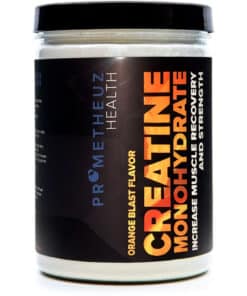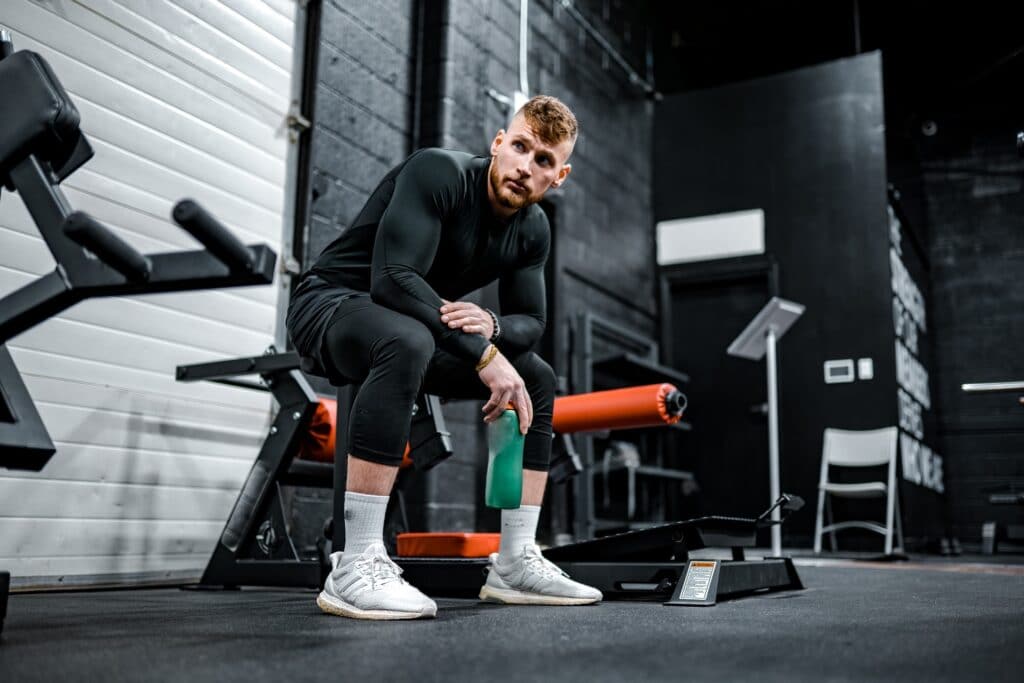Training
BLOOD FLOW RESTRICTION TRAINING
BLOOD FLOW RESTRICTION TRAINING: DOES IT REALLY WORK?
Blood flow restriction training or BFR is a method used by many bodybuilders that allows you to train with lighters loads and attempt to get the same strength gains as one would with heavier weights. Basically, athletes attempt to optimize their bodies by hacking the strength system. This essentially requires putting bands on your upper or lower extremities at the same time as you inflate a pressure cuff that aims to reduce the blood flow back to the heart. This results in metabolic by-products to build up as you engage in exercise.
Most research states that Blood flow restriction training works well to give you that sought-after vascular pump. It works by limiting oxygen and blood flow into the muscle, starving the muscle of oxygen, and allowing you to tap into your slow-twitch muscle fibers and lactic acid system. This means you will obstruct venous blood flow from and to the heart. When you exercise, minerals and nutrients are transported around the body to every cell almost entirely via the bloodstream. If we restrict the amount of blood going to our muscles, fewer nutrients are able to be supplied. This relates to exercise as one of these nutrients carried in the blood is oxygen, therefore during exercise not as much oxygen can be delivered to the muscles.
Can Blood Flow Restriction Training restrict athletic performance?
This lack of oxygen in the muscles can lead to a long list of physiological alterations which hinder the muscles’ ability to perform at a high level. For example, reduced oxygen to the working muscles will reduce the rate of energy production, the rate of metabolite clearance and therefore increase the accumulation of metabolites in the muscle. The importance does not lie in understanding the physiology behind BFR but more important to understand the outcome. Ultimately absolute performance will be reduced across almost every single aspect that relates to athletic performance. Therefore, this method is not recommended as a tool for skill transference and is mostly used by bodybuilders for aesthetic purposes and should not be included in an athletic conditioning program.
Submaximal performance will still be able to be performed however it will require an increased effort compared to when blood flow is not restricted. Basically, when blood flow is restricted, it may take the same effort to perform 50% of your capacity as it would to perform at your usual 80% capacity when not restricted. This type of training might seem negative with few applications to real-world athletic training or scenarios, however, there are particular situations where BFR can be very useful. The benefit of Blood flow restriction training comes from the fact that the muscles can receive a training stimulus while the joints can be loaded to a far lesser degree. This stimulus may not be quite as beneficial as traditional loading, but it can still provide enough to create adaptation and get a training effect. This can be very beneficial to injured athletes or trainees as BFR allows a healing injury to be trained during rehab without irritating the injury. However, always remember that BFR is not the only strategy for athletic rehabilitation and that it should be used when necessary and in conjunction with other strategies to safely return the athlete back to competitive sport or to return the trainee to the level of performance that they are after.
To illustrate the use of Blood flow restriction training for an injured individual, here is an example of how it can be implemented into a theoretical scenario. Let’s say we have an individual who struggles with pain in their knee which is not allowing them to perform their regular training regime. If this person simply stops training until the injury is healed, they will become de-trained. Doing a consultation with this person they claim that whenever they squat above 60% of their one rep max, their knee gets irritated. This could imply that 60% may be the threshold by which symptoms are triggered. Squatting less than 60% can still allow some strength and hypertrophy to be maintained provided the repetitions are taken very close to failure. Another strategy that can be used in conjunction with manipulating the volume and intensity of training is to add some bands or cuffs to cause a blood flow restriction, this will allow loads of less than sixty percent to be used while still challenging the muscles to assimilate its full extend similar than if the load was above sixty percent. Simultaneously the knee won’t be irritated as the joint is not loaded to heavy. With a healing injury, blood flow restriction training can be used to create a strength and hypertrophy adaptation, rather than the injury causing detraining. Additionally, The Journal of Strength and Conditioning Research published a study wherein they stated BFR training is an important surrogate to any other kind of high resistance training when it comes down to building strength and building mass especially in elderly patients. Thus, BFR training is an efficient alternative for selected cases.

What really happens during Blood Flow Restriction training?
Training under normal circumstances will take a certain time for your body to get oxygen to a specific area. Using cuffs around your extremities will significantly reduce this amount of oxygen flow to the muscle which will then induce what is called hypoxia induced factor alpha. This process will trigger the lactic acid response and trigger lactate and hydrogen. This is what normally gives you the feeling of muscle burn usually by the end of a run or during the later reps when the muscles fatigue. This is a physiological response that triggers fatigue and it is the same process that is responsible for triggering metabolic recovery. This means if you block off a little bit of arterial blood flow, you deprive that muscle of oxygen faster which clearly creates more lactic acid and more hydrogen quicker. You will notice when you use BFR cuffs you will get a burn quicker because you are getting yourself there faster. This response is what we are after as most people are so focused on lifting weights at heavy loads that we tend to forget what we are actually after is more of a chemical reaction. We are trying to lift weights so we get to this point where we have a chemical reaction, giving us no choice but to recover and stimulate growth and strength recovery. This implies we may be able to get there faster but with a lower intensity!
Training with BFR cuffs however is still intense in the sense that it is painful and although you are not dealing with a heavy weight, you will be dealing with brutal burn because you are going with higher repetitions, lighter weights and a shorter recovery period. Those that really need to get more done with less, BFR training is very effective. However, always bear in mind that BFR training requires rapid recovery and as such you always have the responsibility to make sure you provide your body with the necessary recovery means. This includes the dreaded foam rolling to break down lactic with its self myofascial release and also include taking the necessary supplements to aid in your diet. Creatine can be especially vital as it is well known for aiding in recovery and is also linked to increased cell hydration. Increase in cell hydration will maximize the water retention effects of BFR training.
The water retention effects of BFR training are often overlooked. BFR training stimulates water retention within the muscle which allows the muscle cells to become swollen. This swelling or localize inflammation is critical to building muscle. This is all a result of the accumulative metabolite build up. This metabolic build up gives you the feeling that we often refer to as a pump. Getting a pump actually might help you build muscle because as we use a BFR cuff and induce more of this swelling it creates a potential for the production of myogenic stem cells. The body has these myogenic stem cells that are found just outside the plasma membrane of your muscle cell and when they fill up with water and fluid, it touches the stem cells and causes them to activate which would in turn stimulate muscle growth. This is an adaptive response; the cell gets bigger causing the body to adapt and build the muscle fibre bigger.
Blood flow restriction should be approached carefully as you do not want to just take any band or cheap pressure cuff alternative and fix it up to any degree you feel. This process should be measured properly, making you start small and work your way up to towards a stronger occlusion. If you are restricted in your training due to factors such as limited time or and injured muscle and joint, BFR can be a tremendous benefit to your training regime if done properly.
-
Product on sale
 Creatine MonohydrateOriginal price was: $14.98.$10.00Current price is: $10.00.
Creatine MonohydrateOriginal price was: $14.98.$10.00Current price is: $10.00.


